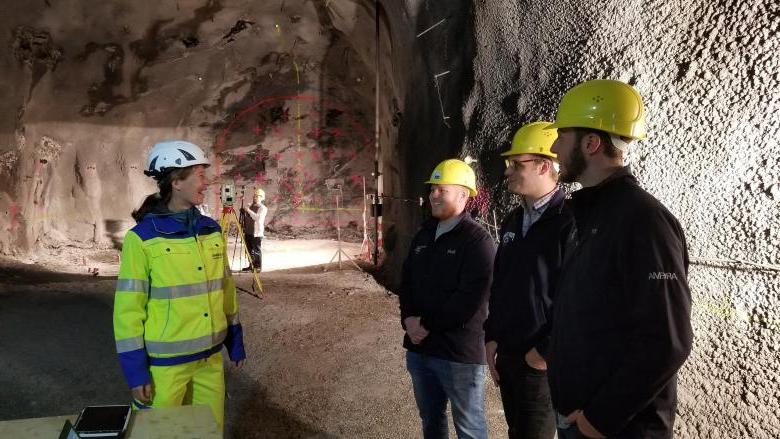
Visual arts seniors Josh Weyandt (left) and Emily Wagner work on 3D projects in 十大网投平台信誉排行榜阿尔图纳分校’s Center for Additive Manufacturing and Printing (CAMP).
3 d打印技术-centered 学习空间 are becoming an increasingly popular way for students across Penn State’s 营uses to explore innovative technology, while also gaining skills for their future careers. The 十大网投平台信誉排行榜阿尔图纳分校’s Center for Additive Manufacturing and Printing (CAMP) is no exception, and 视觉艺术 students have been using it frequently to elevate their artwork.
"It gives us more mediums to use; it's not only paper crafts and painting,” said senior and 视觉艺术 major Emily Wagner. “我们使用不同的机器. We can take our ideas and print them."
Although the 营us founded The CAMP in 2015, a couple of classes have been working with 3 d打印技术 since 2002. Through the center, 3 d打印技术 has become accessible to the entire 营us community.
The CAMP is located in the 做更好的生意 3D Printer Lab in the 营us’s Robert E. Eiche图书馆. Funded and supported by 做更好的生意 and the 营us’s engineering and 视觉艺术 studies programs, The CAMP provides a variety of 3D printers that allow the 营us community to explore and understand how this innovative technology will change the future.
利用空间, 视觉艺术 students create various types of artwork, 包括珠宝, 雕塑和乙烯基贴花, some of which they display at the annual 营us student art exhibition.
“Often it’s the case that there's no physical way of manually sculpting the objects we conceptualize,丽贝卡·斯特泽莱克说, 视觉艺术教授. “For example, 3 d打印技术 allows one to build objects within each other. Something like a chain link or objects that move, to build those with traditional tools would take some big feats of engineering.”
The CAMP has significantly enhanced student learning and engagement. Strzelec has found students regularly work in the center outside of class time.
“When students choose to work in The CAMP when they're not in class it means they're truly engaged. It's meeting them intellectually and creatively in a way they weren’t getting elsewhere,斯特泽莱说.
Artists today need to be multifaceted problem solvers, which means having experience with many diverse tools and modes of making.
一些视觉艺术专业的学生, 比如乔希·韦扬特, plan to pursue careers which will leverage their knowledge of 3D modeling. One such field is video game creation, where Weyandt aspires to work in character design.
“Video game creators will make a character in a computer-aided design program,” explained Weyandt. "Before they send it out for the expensive molding process, they will 3D print a character in their office and ask themselves if it is what they want exactly."
Strzelec说, "These students use the tools they have learned here and parlay them into working at libraries, 艺术中心, 营地和经营企业. They're able to piece together what they learn from this degree and make a living by creating—or assisting people in creating—visual art."



